Ayurvedic Education's Future: Things to Think About
Introduction: Why Talk About the Future of Ayurvedic Education?
Let’s face it—Ayurveda is having a comeback moment. People worldwide are craving more than just quick-fix solutions and looking for holistic healing and therapies with fewer side effects. Ayurveda ticks all those boxes. But here’s the challenge: even with all its potential, Ayurvedic education often lags modern expectations. If we don’t evolve the way we teach and learn Ayurveda, we risk letting this ancient science fade into the background. That’s why the future of Ayurvedic education matters more now than ever. Best Private BAMS Colleges in Delhi-NCR are blending their teaching styles by incorporating latest technologies and tools. It’s not just about preserving tradition—it’s about shaping a healthcare system that’s ready for tomorrow.
The Roots of Ayurveda: A Quick Throwback
Ayurveda isn’t about medicine—it's a philosophy of life. From treating chronic illnesses to enhancing well-being, Ayurveda has been quietly effective for centuries. But in today’s world, this ancient science needs a modern twist to stay relevant
The Growing Relevance of Ayurveda in Modern Times
Ayurveda’s resurgence is no accident. In a world where chronic illnesses are becoming more common and modern medicine often focuses on managing symptoms, Ayurveda offers a refreshing alternative: prevention, personalization, and whole-body healing. Today, Ayurvedic therapies are being used alongside allopathy in wellness retreats, chronic disease management, and even mental health. Its principles of diet, daily routine, and seasonal care are being rediscovered by health-conscious individuals. Global wellness brands are incorporating Ayurvedic ingredients, and research on herbs like Ashwagandha and Turmeric is booming. Simply put, Ayurveda is stepping out of the shadows and onto the global stage—what it needs now is educational reform to support that growth.
Why the World is Turning Back to Ancient Wisdom
In a world dominated by allopathy, why are people giving Ayurveda a second glance? The answer lies in the growing awareness around lifestyle diseases, side effects of synthetic drugs, and a hunger for preventive healthcare3
The Role of Ayurveda in Holistic Healthcare
Ayurveda goes deep inside the problem and treat it rather than treating the symptoms. Think of it as fixing the foundation of a house rather than just painting over the cracks. It’s no wonder wellness centres and spas globally are now embracing Ayurvedic therapies.
Challenges Facing Ayurvedic Education Today
- Outdated curriculum: Many institutions still rely on century-old texts without contextualizing them for modern diseases or integrating scientific advancements.
- Lack of evidence-based focus: a global demand for data-driven medicine. But Ayurveda often lacks clinical trials and peer-reviewed research to validate its effectiveness.
- Limited practical exposure: Students often graduate without adequate hands-on experience, leaving them underprepared for real-world challenges.
- Faculty shortages and infrastructure gaps: colleges lack experienced teachers, modern labs, and high-quality hospitals, which directly impacts learning outcomes.
If Ayurveda is to compete globally, these issues must be addressed head-on.
Outdated Curriculum and Teaching Methods
Let’s be real—many Ayurvedic colleges still follow age-old teaching methods, with dusty textbooks and minimal clinical exposure. This doesn’t sit well with today’s tech-savvy students who crave interactive, hands-on learning. Top Ayurvedic Colleges in Ghaziabad UP are slowly switching to the modern tools of teaching.
Lack of Research and Evidence-Based Practice
Another big hurdle? The lack of scientific validation. While Ayurveda is rich in anecdotal success, it lacks robust clinical trials and modern-day research that can help it stand tall in global forums.
Infrastructure Gaps and Faculty Shortages
Inadequate labs, insufficient teaching hospitals, and a shortage of trained faculty paint a grim picture. Without quality infrastructure, students miss out on real-world experience.
Digital Transformation and Ayurveda
It’s time for Ayurveda to go digital—and some institutions are leading the way. Digital learning platforms, case studies, and AI-based tools are changing the learning scenario. Nowadays, smart classrooms use AR/VR to teach complex anatomy, while digital pathology labs allow for real-time case analysis. This tech-enabled approach not only makes study material more accessible but also more relatable to Gen-Z learners who’ve grown up with screens.
GS Ayurveda Medical College and Hospital Approach
Blending Tech with Tradition
GS Ayurveda has adopted technology in the best possible way. By using AR/VR for anatomy classes and simulations for Panchakarma training, the college is bridging ancient science with modern tech.
The Rise of Online Learning Platforms
Thanks to COVID-19, the digital shift was inevitable. Now, online platforms offer Ayurvedic lectures, case studies, and even virtual internships. GS Ayurveda has integrated this seamlessly with its regular curriculum, offering students the best possible combination.
What Modern Students Expect from Ayurvedic Colleges
Today’s students are more aware than ever before. They just not want a degree but a career which makes them stand out from the crowd. Here’s what they’re looking for in an Ayurvedic institution:
- Global exposure mainly through the exchange programs between the prestigious universities and gaining knowledge about global scenarios by attending international conferences.
- Cutting-edge facilities, like simulation labs and herbal R&D centers.
- Opportunities for entrepreneurship in wellness startups and Ayurvedic product development.
- Clinical confidence, built through real-world patient interactions and internships.
- A future-proof education, blending Ayurveda with public health, technology, and research.
Colleges that meet these expectations will be the ones producing tomorrow’s Ayurvedic leaders.
Global Exposure and Career Opportunities
GS Ayurveda encourages the global outlook. Today’s students seek internships abroad, international conferences, and exposure to cross-cultural are being encouraged by GS Ayurveda. Most of the BAMS Colleges in UP are also following this new system of teaching.
Hands-On Clinical Experience
Theory is cool, but practice? That’s where the magic happens. GS Ayurveda ensures students treat real patients early on, under expert guidance, preparing them for real-world challenges.
GS Ayurveda’s Vision for the Future
GS Ayurveda Medical College & Hospital doesn’t believe in just following the trends—it’s setting them. With a clear vision to modernize Ayurvedic education without diluting its soul, the institution has adopted a three-pronged strategy: upgrade, integrate, and innovate. Their goal is to produce competent Ayurvedic professionals who can thrive both in India and internationally. The college is revamping its curriculum, investing in infrastructure, promoting interdisciplinary learning, and embedding research and digital technology into its academic fabric. It’s Ayurveda 2.0—and it’s happening now.
Modernizing Curriculum with Evidence-Based Approaches
The college is revamping its curriculum to include modern diagnostic tools, pathology basics, and pharmacology—all without diluting Ayurvedic essence. Now that’s balance!
Investing in World-Class Infrastructure
Smart Classrooms & Digital Libraries
GS Ayurveda has fully equipped smart classrooms and e-libraries to make learning dynamic and up to date.
Advanced Herbal Labs and Simulation Rooms
From dissecting rare herbs to role-playing doctor-patient scenarios, the learning gets real here.
Emphasis on Research and Innovation
Collaborations with National and International Bodies
The institution regularly partners with universities and research centers worldwide, pushing Ayurvedic frontiers.
Student Research Grants and Publications
Students are encouraged to conduct clinical trials, write papers, and even present at conferences—a rare yet vital approach.
Integrating Interdisciplinary Learning
Collaborating with Modern Medicine and Allied Sciences
GS Ayurveda fosters interdisciplinary learning with faculties of nursing, physiotherapy, and even modern pharmacology and thus blending well with modern medicine.
Encouraging Multi-Disciplinary Projects
Projects involving engineers, botanists, and nutritionists help students understand the bigger healthcare picture.
Creating Future-Ready Ayurvedic Professionals
Education isn’t just about what you know—it’s about how you apply it. GS Ayurveda focuses on:
- Entrepreneurship training for students who want to launch Ayurvedic product lines, wellness centers, or tech-based healthcare solutions.
- Soft skill development, Leadership, and Entrepreneurship: What’s the use of knowledge if you can’t communicate or lead? Courses in communication, medical ethics, leadership, and entrepreneurship are now part of GS Ayurveda’s curriculum.
- Cultural Sensitivity and Global Health Competence: students to handle patients from diverse backgrounds, including international ones.
- Public health awareness, encouraging graduates to think beyond individual treatment and towards community well-being.
Graduates from GS Ayurveda are not just doctors—they’re change-makers.
GS Ayurveda’s Outreach and Community Programs
Healing begins at home—and GS Ayurveda takes that seriously.
- Preventive care drives, focusing on seasonal regimens, yoga sessions, and lifestyle counseling.
- Awareness Programs in Schools and Colleges Ayurveda awareness programs in schools, educating young minds on the benefits of natural living.They also educate school kids about Ayurvedic principles—like Dinacharya (daily routine) and Ritucharya (seasonal routine)—planting seeds for a healthier generation.
- Women’s health initiatives, educating on menstrual hygiene, fertility issues, and prenatal care using Ayurvedic techniques.
- Regular rural health camps, are organised for underserved offering them free consultations, Ayurvedic medicines, and diet charts.
These programs not only provide practical training but also reinforce Ayurveda’s mission—healthcare for all, not just the privileged.
Policies and Regulatory Reforms Supporting Change
Ayurveda’s transformation isn’t happening in isolation. The Ministry of AYUSH and NCISM are taking step-by-step approach to implement new norms:
- Standardizing education, with a uniform curriculum, teacher training programs, and competency-based assessments.
- Encouraging research, by funding clinical trials and supporting institutions that invest in innovation.
- Bridging Ayurveda with global healthcare systems, so Indian practitioners can work abroad and foreign students can study in India.
- Accreditation and quality control, ensuring institutions meet global standards of excellence.
These programs not only provide practical training but also reinforce Ayurveda’s mission—healthcare for all, not just the privileged.
FAQs
Q1. Can students from GS Ayurveda practice internationally?
Yes, the college is actively working toward international recognition and collaborations, giving students opportunities to learn and work globally.
Q2. Does GS Ayurveda offer research opportunities?
Absolutely! Students are encouraged to participate in clinical trials, write papers, and present at national and international seminars.
Q3. How does GS Ayurveda incorporate digital learning?
The college offers smart classrooms, virtual labs, online lectures, and simulation-based learning to keep education both engaging and effective.
Q4. Are there any community service programs for students?
Yes, GS Ayurveda involves students in rural health camps, school awareness programs, and preventive health drives to give them real-world exposure.
Conclusion: A Future Rooted in Wisdom, Blossoming Through Innovation
Ayurveda offers sustainable solution for the future. But only if we treat its education with the seriousness it deserves. Institutions like GS Ayurveda Medical College & Hospital are lighting the way by modernizing classrooms, investing in research, and developing well-rounded Ayurvedic professionals. They understand that the future of Ayurveda lies not in resisting change, but in embracing it thoughtfully. With its roots grounded in time-tested wisdom and its branches reaching out toward innovation, Ayurvedic education is ready for a renaissance—and GS Ayurveda is already leading the charge followed by some leading BAMS Colleges in UP.

